- Quick Read
- Deep Read ( 6 Min. )

Why is Christian Science in our name?
Our name is about honesty. The Monitor is owned by The Christian Science Church, and we’ve always been transparent about that.
The Church publishes the Monitor because it sees good journalism as vital to progress in the world. Since 1908, we’ve aimed “to injure no man, but to bless all mankind,” as our founder, Mary Baker Eddy, put it.
Here, you’ll find award-winning journalism not driven by commercial influences – a news organization that takes seriously its mission to uplift the world by seeking solutions and finding reasons for credible hope.
Explore values journalism About usIn Today’s Issue
- Estonians trust their government. That’s why it can offer advanced services.
- Today’s news briefs
- NATO anniversary: Here’s why the alliance still matters
- Why drivers may soon pay $15 to use New York’s busiest streets
- Here’s what you need to know about the April 8 solar eclipse
- Five new mysteries plumb the past for clues to the present
Monitor Daily Podcast
- Follow us:
- Apple Podcasts
- Spotify
- RSS Feed
- Download
TODAY’S INTRO
Where technology is anchored in trust
What can Estonia, a one-time Soviet state that’s long been one of the world’s most wired nations, teach a world that’s tumbling ever deeper into digitization?
It’s a question that matters in an age of data breaches and artificial intelligence.
The answer may be as fundamental as the ones and zeros of binary code. With careful regulation and full transparency, Estonia has developed a system that protects and respects its citizens’ data ownership. It’s imperfect. But Estonians appear to value its aims.
Lenora Chu reports today from Tallinn. Hers is our latest story in an ongoing project on rebuilding trust.
Share this article
Link copied.

Help fund Monitor journalism for $11/ month
Already a subscriber? Login

Monitor journalism changes lives because we open that too-small box that most people think they live in. We believe news can and should expand a sense of identity and possibility beyond narrow conventional expectations.
Our work isn't possible without your support.
Estonians trust their government. That’s why it can offer advanced services.
As Lenora reports, many Estonians appear deeply invested in their country’s e-government programs, which were developed over decades to make life easier and more secure.

Estonians not only vote and pay taxes online, but also buy property, register cars, sign contracts, and apply for unemployment benefits digitally. Nearly every service linked with a government office can be done online.
All of this activity hinges upon public trust in digital governance that’s been hard to replicate in other countries.
It takes decades to build up the kind of comfort Estonia has with digitization, says Linnar Viik, a leading Estonian computer scientist. “It was kind of word of mouth and private and personal experience.”
Trust also had to flow from leadership to the technology industry. One such example: In 2000, Mr. Viik was allowed to convert Cabinet meetings from paper-based – at the time, they required knee-high stacks of printouts – to completely digital after one conversation with the prime minister.
“He asked, ‘Do we have any other examples around the world of paperless government?’” recounts Mr. Viik. “I said, ‘No.’ He said, ‘Cool, OK, do we have money for that?’”
The Cabinet budget had $85,000 left for printing in that fiscal year, and Mr. Viik spent it on hardware, software, and training. What resulted was the paperless e-Cabinet: a fully wired room that drew global media attention.
Estonians trust their government. That’s why it can offer advanced services.
Getting married is now one appointment easier in Estonia.
The world’s most digitally integrated country launched the sacred union into the e-governance stratosphere last year – where it joined nearly every other government service you can imagine.
Estonian citizens were already able to file taxes online, vote online, and access digital prescriptions. All of this digital activity hinges upon the Estonian smart identification system – which allows for state-recognized digital signatures – and a public trust in digital governance that’s been hard to replicate in other countries.
“I actually own my data – I can always track when someone looks at my data,” says Kristiina Veerde-Toompalu. “I trust [my government]. It’s such a trademark for Estonia that we have these options that they’ve worked hard to make it secure.”
Ms. Veerde-Toompalu got married in July, and applying online for the certificate saved her and her fiancé a special trip to her hometown’s city registrar. “We don’t have to go somewhere and announce our intention to get married,” she says. “I could also visually see [on the government app] options of my new name and my old name, and try them out.”
To deploy digital services successfully requires Estonians to trust the act of offering up to the cloud everything from birthdate and birthplace to tax information, salary, and medical diagnoses. That public trust took decades to cultivate, and ultimately relies on Estonia’s tight and transparent system of regulation.
“Paper files are not safer, because you cannot tell who looked at an analog file,” says Kersti Kaljulaid, who served as president of Estonia from 2016 to 2021. “Estonian e-governance is a tightly regulated environment. Each and every citizen knows that government does everything to protect their data. It even says in the law, the data belongs to citizens, and you have control over who looks at your data, and you can ask them why they did. This is a luxury compared to an analog world, and I believe this is why we have this in-built trust.”
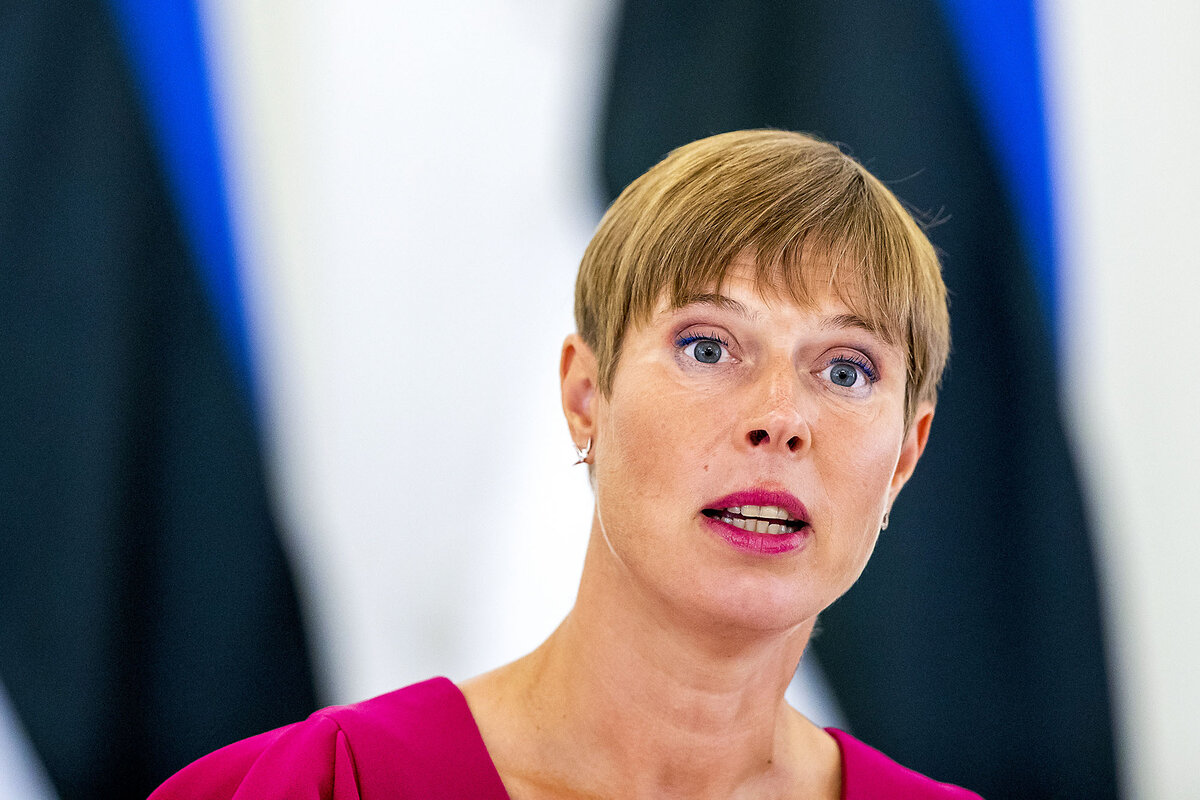
“Another layer of trust”
It takes decades to build up the kind of comfort Estonia has with digitization, says Linnar Viik, a leading Estonian information technology scientist and government adviser since 1995. “Trust in digital channels didn’t happen overnight. It was kind of word of mouth and private and personal experience,” he says.
“When you’re sitting at the family dinner table and I’m saying, ‘You know what? I emailed our mayor’s office earlier today and they responded,’” he says, “the children are listening – and then they’ll also try.”
Trust also had to flow from leadership to the tech industry, and it did. “That is another layer of trust, whether you as a leader trust the experts on something you don’t understand. The politicians started to listen to the technology people and gave them space,” says Mr. Viik.
One such example: In 2000, Mr. Viik was allowed to convert Cabinet meetings from paper-based – at the time, they required knee-high stacks of printouts – to completely digital after one conversation with the prime minister.
“He asked, ‘Do we have any other examples around the world of paperless government?’” recounts Mr. Viik. “I said, ‘No.’ He said, ‘Cool, OK, do we have money for that?’”
The Cabinet budget had $85,000 left for printing in that fiscal year, and Mr. Viik spent it on hardware, software, and training for Cabinet ministers and staff. What resulted was the paperless e-Cabinet: a fully wired room that drew global media attention.
Over the years, more and more services were placed online, a result of the latitude granted to tech innovators and advisers, as well as the public’s growing acceptance of digitization.
Start the process, then fix the problems
Now Estonians not only vote and pay taxes online, but also buy property, register cars, sign job and rental contracts, and apply for unemployment benefits digitally. Nearly every service linked with a government office can be done digitally. And for many services, citizens need not even apply, as certain entitlements are automated. That includes parental allowances and child support.
Digitization also extends to health care, with every provider required to submit patient information to a centralized digital health authority. This can be helpful when, say, an emergency doctor needs to access records for a patient undergoing a crisis.
“The connotations [around trust] are different in different countries,” says Mr. Viik. “There are really social and cultural reasons for that type of mistrust” of government having our data. Other European Union governments – particularly Germany, which has a long history with government surveillance – want to mitigate all risk before digitizing.
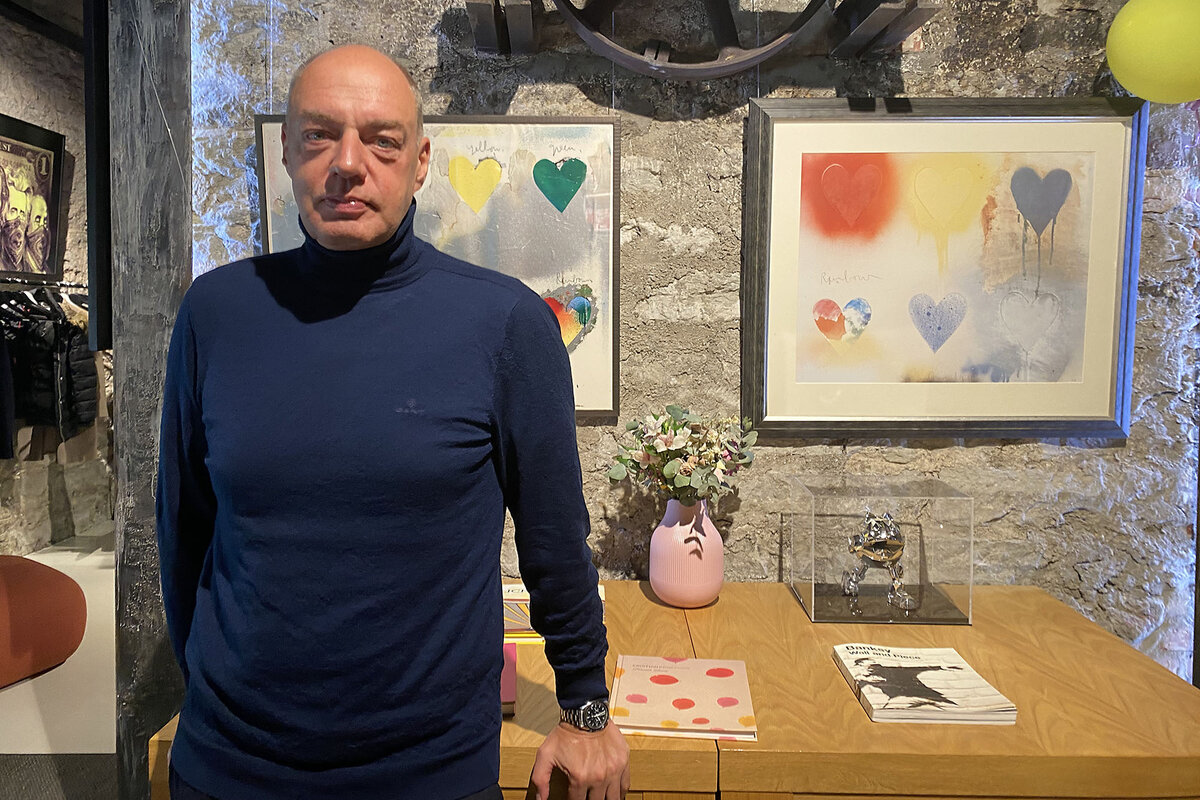
“In Estonia, we would rather say, ‘Let’s start doing things,’ and only then we can find out what are the problems we need to mitigate,” he says.
The paradox is that people already offer up enormous amounts of personal data to Google, Facebook, and other companies that are not only foreign but also governed independently, Mr. Viik says. “The institution you can control and govern is your own government – but you don’t trust? Why you don’t trust your government who is under your control?”
Estonia’s practical approach to digitization appears to have paid off.
Officials estimate that citizens have saved roughly five workdays a year from the digital signature alone – that’s from not having to go stand in line at a government office, request a document by mail, or file taxes by paper.
Meanwhile the government saves on staffing and other operating costs. Adoption by the public is near complete; more than 99% of Estonians file their taxes and access medical data online according to statistics from the e-Estonia initiative.
Focus on flash, not function?
But digitization isn’t all roses. A still-present digital divide leaves some people behind, whether it’s those who aren’t tech savvy or can’t afford computers.
“They say, ‘I don’t have the skills; I cannot use the system; I don’t have grandchildren to help me,’” says Andra Siibak, a media studies expert at the University of Tartu. “It’s not so straightforward, and for these people, [digitization] has made life not more convenient, but much more difficult.”
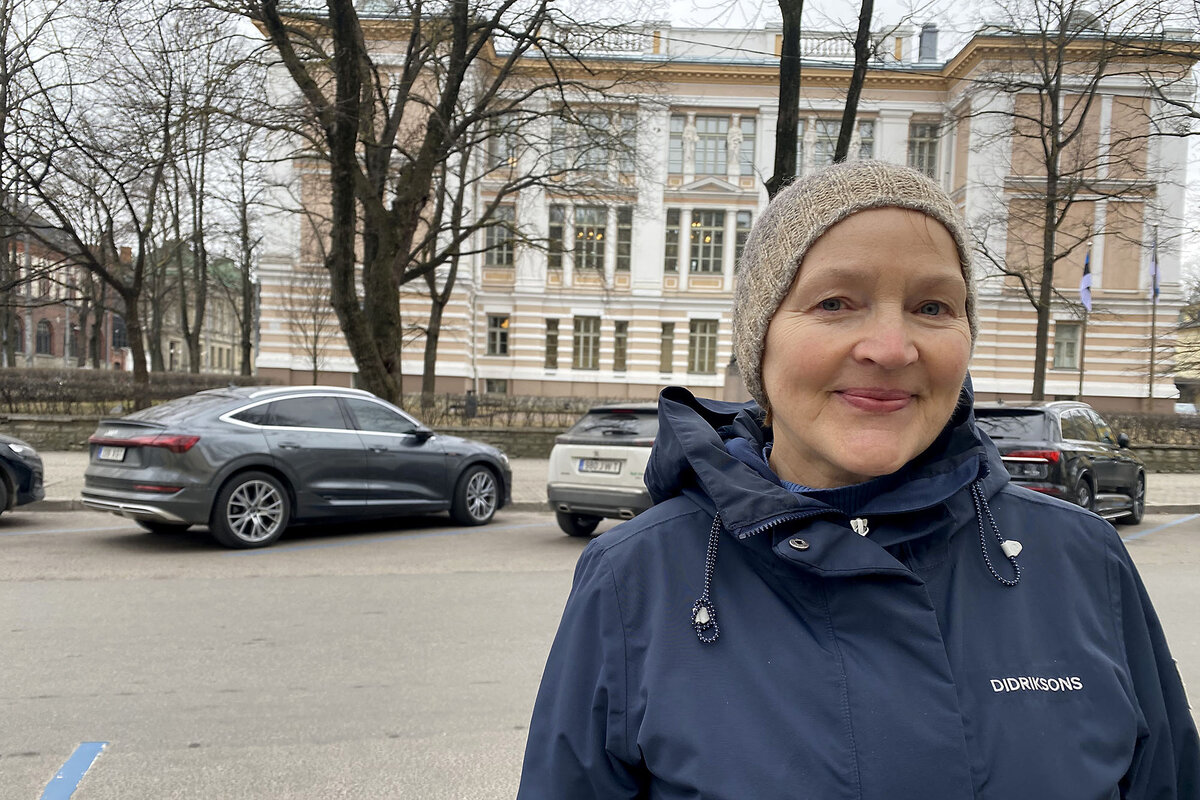
Leelo Telling, a recently retired kindergarten teacher’s aide, says she was raised to “trust and expect the best from others and from society,” and filed her taxes online the very first year she could. But some services required that “I call my kids for help,” she says.
Another problem is that the public trust could be considered naive, as it’s predicated on an idea of “I have nothing to hide,” says Dr. Siibak. Yet to date, hacking and data breaches haven’t been significant issues.
Kristjan Kikerpill, a digital sociologist and cybercrime expert at the University of Tartu, warns that Estonia may now be spending too much time prioritizing the next flashy thing to offer online instead of “nuts and bolts” items that might truly make life easier.
“Now you can get married online, but how many times in your lifetime will you use such a service?” says Dr. Kikerpill. “It’s become a big song and dance around marketing such services, instead of solving small daily problems with improved efficiency, robustness, and reliability.” For example, he says, declaring customs on packages is still incredibly cumbersome.
Still, Ms. Veerde-Toompalu, now eight months married, has been happy to trade her data for ease of use.
She and her now-husband bought a house from sellers that they met virtually for the notary signing. When they eventually have their first child, registering the baby at the hospital will also generate monthly child care payments, as well as a place on a kindergarten waitlist.
“What we have now is so convenient,” she says. “You don’t need to go anywhere.”
Maris Hellrand contributed to this report.

Today’s news briefs
• Israeli airstrike kills aid workers: Seven workers from World Central Kitchen are killed, leading the charity to suspend delivery of food aid to Gaza. Israel’s offensive has pushed hundreds of thousands of Palestinians to the brink of starvation.
• Florida moves on abortion: The Florida Supreme Court clears the way for a ban on abortions after six weeks of pregnancy. But under a separate ruling, the court allowed a ballot measure on abortion rights to go to voters.
• Progress in Baltimore: The U.S. Coast Guard opens a temporary alternate channel for vessels clearing debris at the site of the fallen Francis Scott Key Bridge in Baltimore, a first step toward reopening the port
• Venezuela faces wildfires: The country battles a record number of them, according to data released April 1, as the Amazon rainforest region is beset by a climate change-driven drought.
• Oregon reverses on drugs: The governor signs into law a bill on April 1 that makes so-called personal use possession a misdemeanor, rolling back previous decriminalization efforts.

A deeper look
NATO anniversary: Here’s why the alliance still matters
For 75 years, NATO has brought peace and prosperity to Europe, the United States, and their allies. Now a grueling war in Ukraine heralds severe tests ahead for the alliance.

- Quick Read
- Deep Read ( 16 Min. )
-
Anna Mulrine Grobe Staff writer
As NATO marks its 75th anniversary on April 4, leaders of the 32 member states are celebrating what is widely considered the greatest and most effective military alliance in history.
NATO was part of the postwar architecture of multilateral organizations – largely designed by the United States – whose aim was preventing a third world war and building global economic stability. Yet it was also at the visionary forefront of reaching for those goals from a foundation of core principles: democratic governance, universal human rights, and the rule of law.
To that list of values, the alliance added trust, which derived from each member’s pledge under Article 5 to come to the defense of any fellow member that came under attack. Superpower America’s promise of defense provided the bedrock for that trust to flourish.
NATO succeeded in halting the grim succession of wars in Europe, triumphed in the Cold War with the Soviet Union, and then helped build a united and prosperous Europe by welcoming many former Soviet republics into the club.
“The fundamental reason” for the alliance’s unparalleled success is that “the leaders in Europe and America – having lived through two world wars – realized that the best and most practical way to prevent a third was not for America just to join in addressing a war once one started, but for America to be in Europe to prevent a war from ever starting,” says Ivo Daalder, U.S. ambassador to NATO under President Barack Obama.
“At the very core of this success is trust,” he says.
NATO anniversary: Here’s why the alliance still matters
Fighter jets scrambled low and loud, prepared to quash enemy fire, as military vessels quickly ferried tanks across Poland’s longest river, the Vistula.
The exercise, NATO’s largest since the Cold War, was part of a five-day, 32-country show of strength in early March involving 90,000 troops. The operation tested just how quickly the alliance could speed reinforcements to Poland’s eastern border should Russia invade a member nation.
“We need to be ready – and we are ready – to fight tonight,” says U.S. Maj. Gen. Randolph Staudenraus, a NATO operations specialist, surveying the scene.
But there was another reason for the impressive display of trans-Atlantic coordination and unity: to demonstrate that the military alliance born of the ashes of World War II remains just as relevant today to a newly destabilized Europe.
Indeed, as NATO marks its 75th anniversary on April 4, leaders of the alliance’s 32 member states on both sides of the Atlantic are celebrating what is widely considered the greatest and most effective military alliance in history.
Originally comprising 12 countries led by the United States, the North Atlantic Treaty Organization set out to secure a ruined and unstable Europe prone to devastating wars. Its success promoted decades of remarkable economic prosperity.
The alliance was part of the postwar architecture of multilateral organizations – largely designed by the U.S. – whose aim was preventing a third world war and building global economic stability. Yet it was also at the visionary forefront of reaching for those goals from a foundation of core principles: democratic governance, universal human rights, and the rule of law.
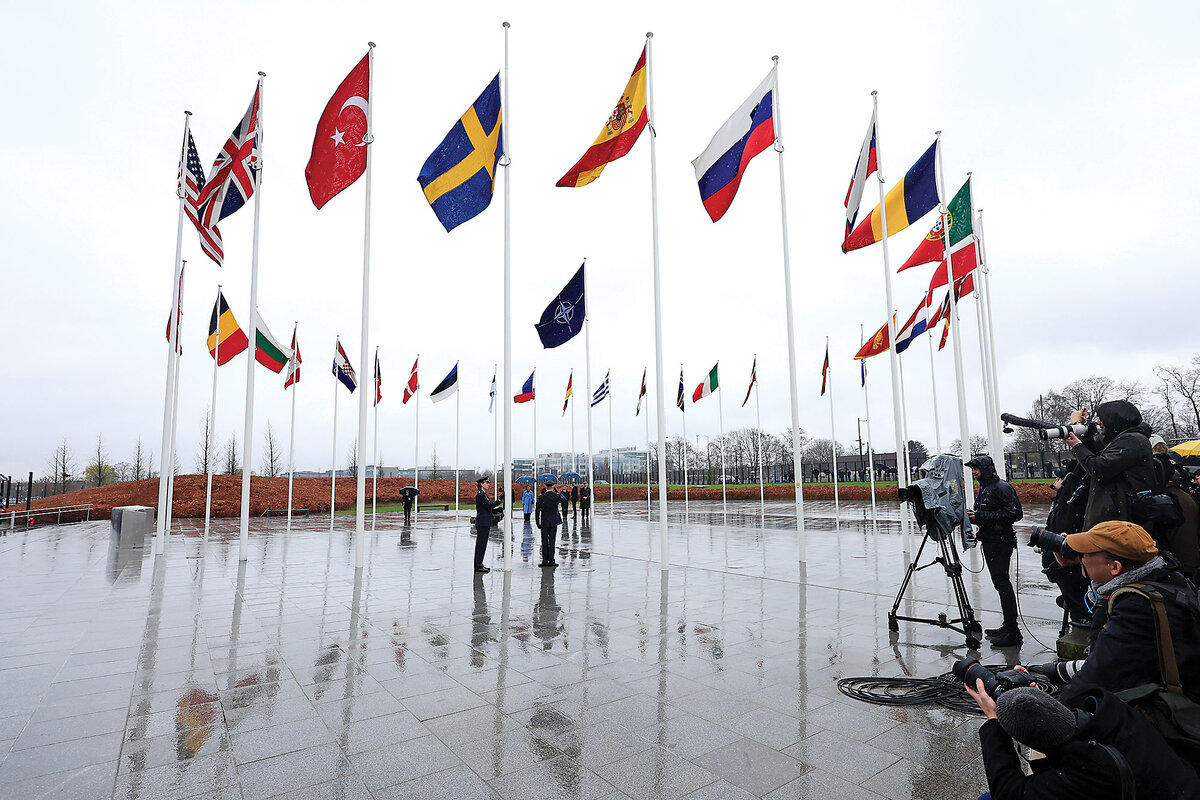
To that list of values, the alliance added trust, which derived from each member’s pledge under the treaty’s Article 5 to come to the defense of any fellow member that came under attack. Superpower America’s promise of defense provided the bedrock for that trust to flourish.
NATO succeeded in halting the grim succession of wars in Europe, triumphed in the Cold War with the Soviet Union, and then, in an ambitious expansion wave a decade after the fall of the Berlin Wall, helped build a united and prosperous Europe by welcoming many former Soviet republics into the club.
“The fundamental reason” for the alliance’s unparalleled success is that “the leaders in Europe and America – having lived through two world wars – realized that the best and most practical way to prevent a third was not for America just to join in addressing a war once one started, but for America to be in Europe to prevent a war from ever starting,” says Ivo Daalder, U.S. ambassador to NATO under President Barack Obama.
“At the very core of this success is trust,” he says. “NATO is not just a treaty or a legal obligation. It’s the confidence each member has in the highly elusive and difficult-to-define element of trust.” There’s trust in fellow members, he adds, “but also a trust that America would do something quite abnormal for a country to do, which is to defend them even when American territory is not directly affected or directly threatened.”
An anniversary summit in Washington in July is sure to trumpet a nearly eight-decade record of success. Yet many trans-Atlantic security analysts and diplomats caution that the celebrations in April and July must be tempered by recognition of the significant challenges the alliance faces, some of which may be self-inflicted.
First among them are Russia’s war in Ukraine and NATO’s failure at one of its core purposes, which was to prevent the return of war to Europe. Other stark challenges loom: growing disenchantment with multilateral management of global affairs, generally, and with the U.S.-led postwar architecture; and rising nationalist “America First” sentiments in the U.S. embodied by former President Donald Trump.
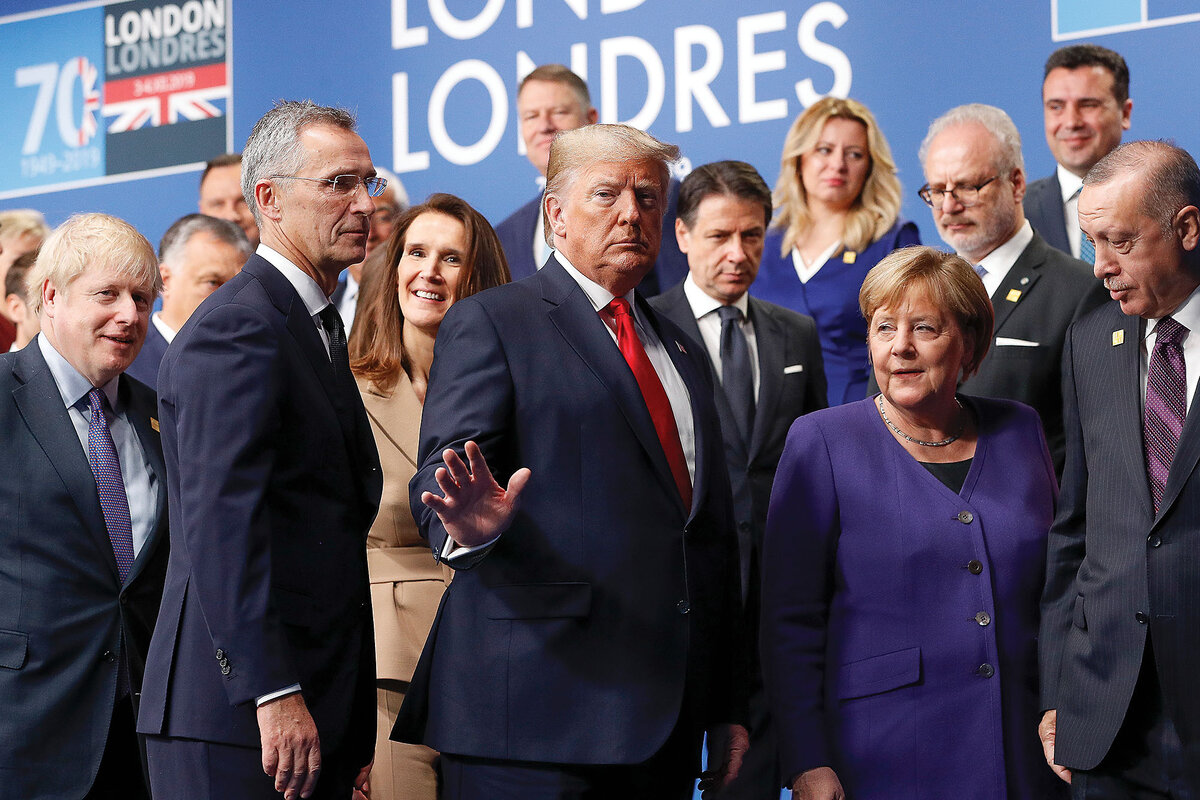
“The fact that the alliance has new members Finland and Sweden coming in and others aspiring to join is indicative of its enduring value,” says Ian Lesser, vice president of the German Marshall Fund and executive director of its Brussels office. “But at the same time, it’s fair to say that NATO was very seldom tested during the Cold War as seriously as it’s being tested today.”
Russia’s invasion of Ukraine has united NATO and given it a renewed sense of purpose, he says, “but that does not alter the reality of some big looming questions” that will define the future of trans-Atlantic security agreements.
Chief among those questions, Dr. Lesser says, is “the fundamentally shifting political atmosphere in the United States concerning alliances and the U.S. role in the world.” Perhaps of equal importance, he adds, is the “dismantling of the broader security
infrastructure that was part of NATO’s strength,” including arms control and strategic dialogues with adversaries, “to a point where it is virtually absent today.”
The hand-wringing over signs of weakening U.S. support for NATO – and for the U.S. maintaining its leadership role – intensified in February when Mr. Trump, at a campaign rally in South Carolina, cast doubt on whether, if reelected president, he would honor Article 5.
On the contrary, he boasted, he would “encourage” Russia “to do whatever the hell they want” to any member not reaching the NATO target of spending 2% of gross domestic product on defense. His remarks were reminiscent of when he was president-elect and called NATO “obsolete.”
In response, NATO officials point out that European members collectively do hit the 2% spending target. Moreover, Europe’s defense-spending trajectory is sharply upward. This year 18 members will spend the recommended 2% on defense, they say, compared with only three in 2014 when Russia annexed Ukraine’s Crimean Peninsula.
Mr. Trump received hoots and applause when he threatened to abandon European allies. But others point out that his remarks actually belie continuing strong support among Americans for NATO and for America’s global leadership role more broadly. A Gallup poll in February showed that a plurality of Americans, 47%, support the current commitment to NATO – that includes 20% who would support the U.S. increasing its commitment to the alliance.
One key factor in that continuing support is Russian President Vladimir Putin’s growing belligerence toward the West, extending to threats of nuclear war. His full-scale invasion in 2022 of an increasingly Western-oriented Ukraine with aspirations for NATO membership has also kindled support for the alliance across Europe, including in its newest members, Finland and Sweden.
In the years before Moscow’s invasion of Ukraine, the chief of defense command for the Finnish Defence Forces, Lt. Gen. Vesa Virtanen, enjoyed taking visitors to his nation’s border with Russia.
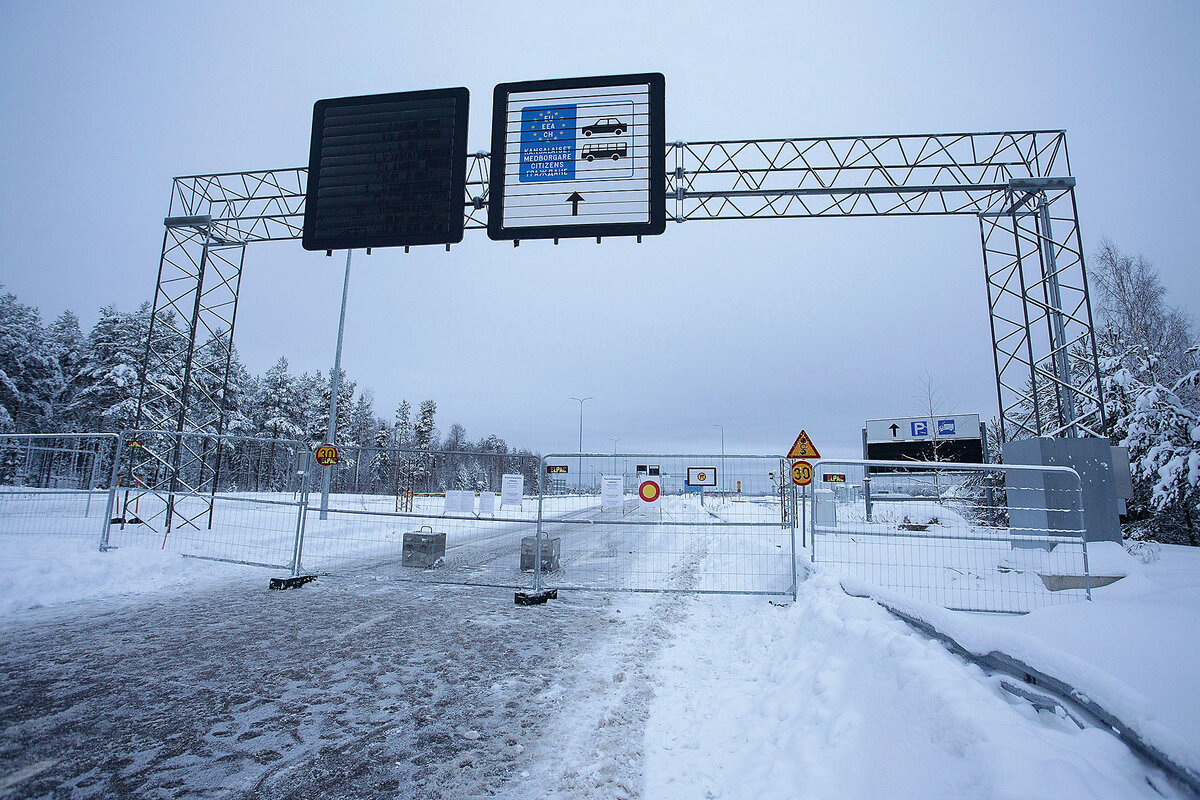
“I’d say, ‘Hey, look at that – no fences, nothing.’”
Finnish authorities simply painted tree trunks yellow as a mild warning to any wanderers in the dense, lake-dotted woodlands.
Today, fences are being erected and official crossings are currently closed.
Beneath a canopy of snow-dusted birch and spruce outside the border city of Imatra, Jussi Vainikka, captain of Finland’s border police for the country’s southeast, nods toward Moscow. He notes that this land is no longer just the line of demarcation between Finland and Russia: It is NATO’s newest frontier – 832 miles at its longest – with an increasingly unpredictable adversary.
NATO leaders have warned that the border is a target for Russian attacks, and last year Captain Vainikka bore witness to one of them. At the time, he saw it as an unusual “phenomenon” – waves of immigrants attempting to cross into Finland on bicycles, through the snow.
Alliance officials call it hybrid warfare – Russia attempting to weaponize immigrants by flooding the border and creating confusion. “This,” Lieutenant General Virtanen says, “was organized by Moscow.” The Kremlin has also made use of cyberattacks and disinformation campaigns.
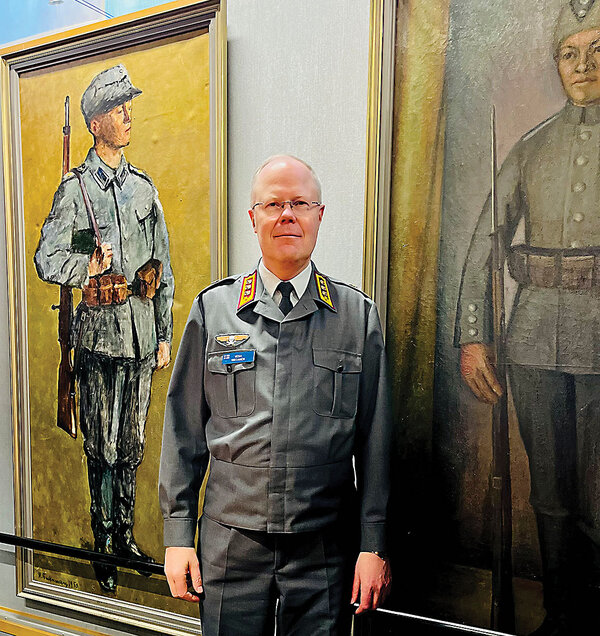
Against this backdrop, the Article 5 pledge to come to the aid of embattled allies is reassuring – and was the driving impetus for Finland’s 2022 decision to join NATO, says retired Gen. Jarmo Lindberg, Finland’s chief of defense until 2019. For Finns, “the feeling is that [we are] now under the protection of NATO and Article 5,” he says, adding that national media often point out that “Russia has never attacked a NATO member nation.”
This trust in security through the alliance is a new development for Finnish citizens. Prior to Russia’s 2022 invasion of Ukraine, support for NATO membership hovered at 20%. Days afterward, it skyrocketed to 76%.
Soile Hellsten, whose home is just a few hundred yards from the border, experienced this evolution in thinking herself. Since Russia’s invasion of Ukraine, the possibility of war “is more in my head,” she says. “It’s a worry.” Joining NATO offers reassurance and a clear pathway to greater security, she says.
The closing of the border has negatively affected her gas station and cafe; Russians once made up about half of all customers for the region’s spas, cross-country ski resorts, and karaoke clubs. But Ms. Hellsten says she nonetheless supports Finland’s decision to join NATO and close the border for the time being.
Her reduced income is a small price to pay, she says, for the trust and enhanced confidence she now has in her family’s safety – and for the security of “all the people” of the alliance.

Some of the highest support for NATO among its members is found in former states of the defunct Soviet Union.
Since joining NATO, the Baltic states and countries of Eastern Europe have lived in peace and prospered. And they have exchanged the yoke of the Soviet Union’s communism for the freedoms and governing principles that come with alliance membership.
Estonia, the northernmost of the Baltic states, is a poster child for the benefits of membership.
“We’re a laboratory example that if you believe in these values, if you do the right things – freedom, free press, anti-corruption – then you get to security and prosperity,” says Kusti Salm, permanent secretary of the Estonian Ministry of Defense. Moreover, since Estonia gained its independence in 1991 (and joined NATO in 2004), its GDP has increased fortyfold.
“We’re 40 times richer than we were,” he says.
And if NATO membership comes at a price, most Estonians will tell visitors it’s well worth paying.
At the Victims of Communism Memorial in Tallinn, the country’s seaside capital, Maj. Gen. Veiko-Vello Palm, commander of the Estonian Defence Forces, traces his fingers along a firing squad’s bullet holes.
“This is what happens when we are hesitant,” says Major General Palm, “and don’t fight back.”
Since the Soviet Union’s collapse, Estonia has lived in the shadow of a looming Russian threat.
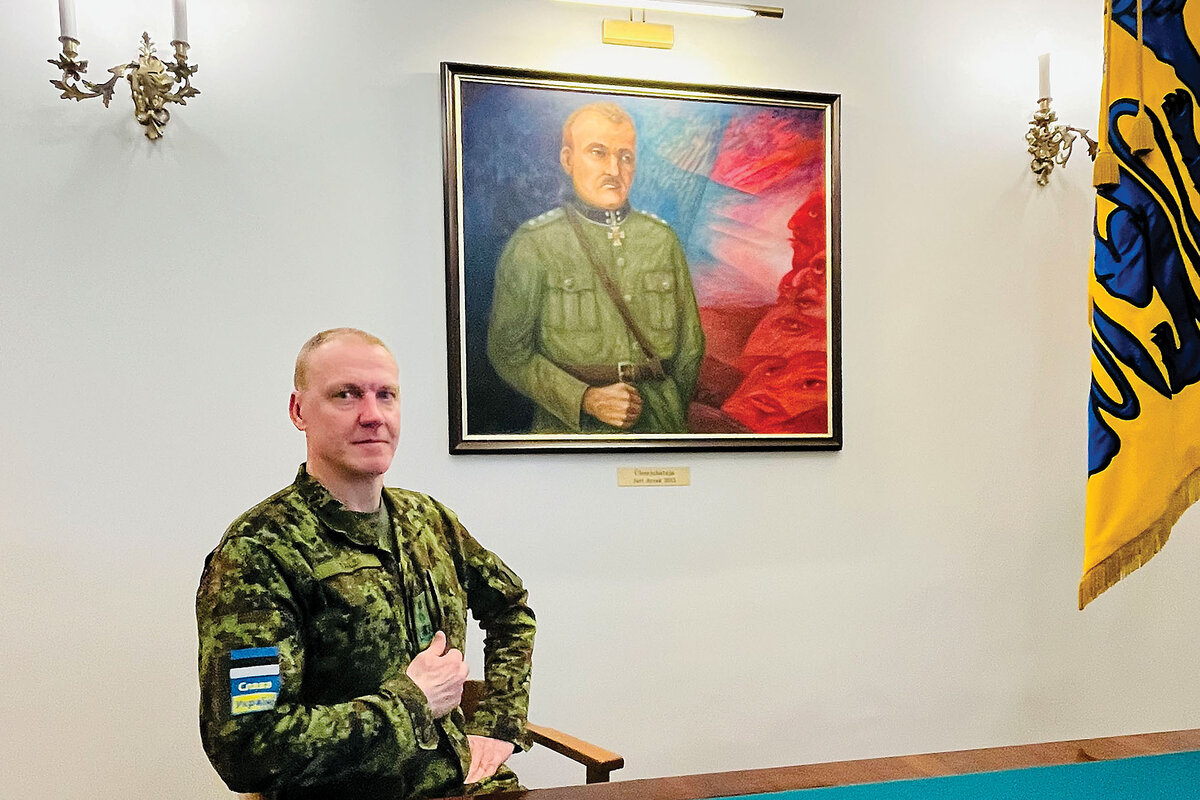
“There hasn’t been a single day when Russia hasn’t been either patronizing us – that’s the positive scenario – or bluntly, aggressively saying that these are Russian lands and [they] need to take them back. It’s absolutely clear that we have just one existential threat,” he adds, “and it’s Russia.”
The Estonian military has evolved considerably in the face of this threat. A member of the first class of conscripts in 1992, Major General Palm recalls sharing seven rifles among 300 soldiers and wearing civilian clothes to train because there was no money for uniforms.
Yet even as NATO membership has greatly enhanced a sense of security, the country has never allowed that to weaken an abiding belief in self-reliance. Indeed, despite all the talk at the moment about Article 5 and the principle of collective defense, the general says the Estonian military puts equal stock in Article 3, which outlines each member’s obligation for self-defense.
Out of a population of 1.37 million, roughly 220,000 are registered to serve and have received at least one year of military training. Every year, Estonia organizes snap exercises. When the government puts out the call to muster, reservists are expected to drop everything – and they do.
Indeed, given the Article 3 obligations, Mr. Salm of the Defense Ministry says there is some truth to Mr. Trump’s complaint that some NATO members aren’t paying their fair share.
“To be honest, when it comes to ... this key criticism, we totally agree,” he says. “The way you create military credibility is through defense investments – that’s how it works.”
Regarding Ukraine, he says it is only by NATO standing strong with Kyiv that it will be able to effectively confront Russia and “send the message I think everyone wants to hear: that you don’t impose your will militarily on other countries.”
Underlying all of this, Mr. Salm says, is how clear it’s become that Mr. Putin’s efforts to torpedo the alliance have backfired. “Russia’s strategic goal is to break us apart and to create great internal frictions,” he says. Instead, “we have ended up stronger and more united.”
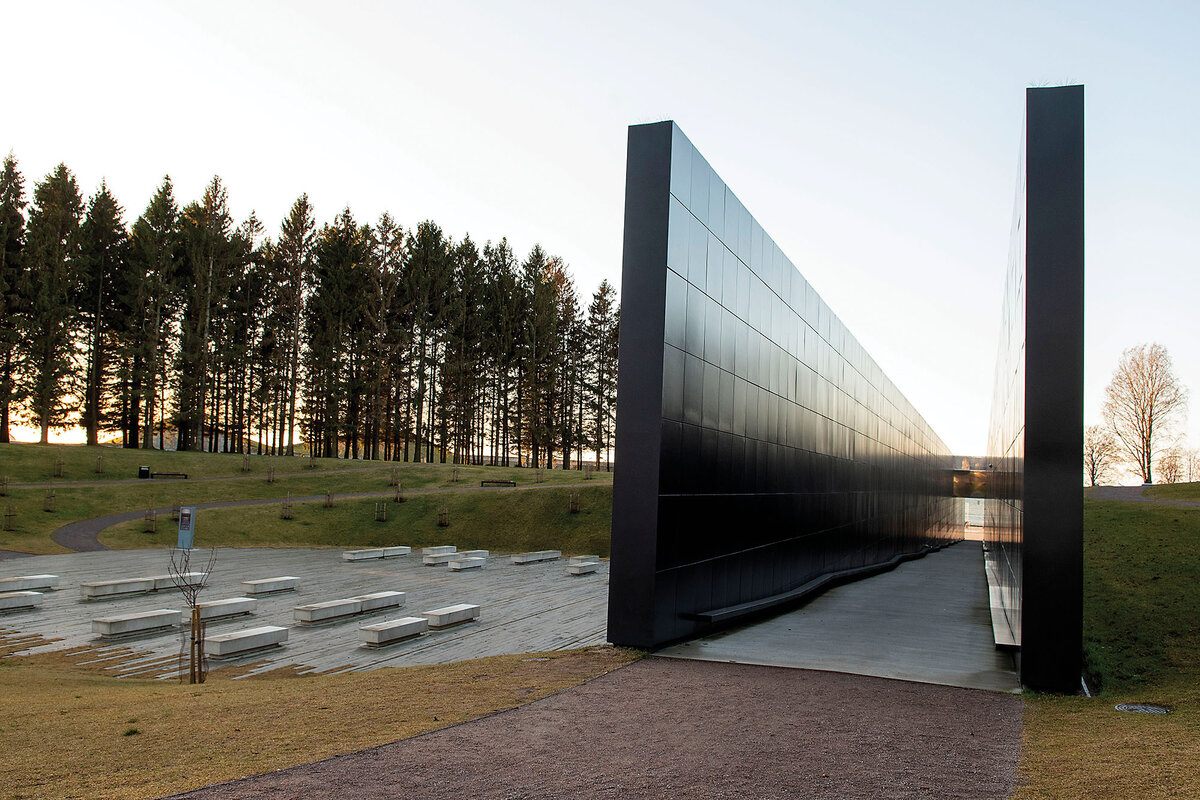
At the Swedish Peace and Arbitration Society, which supports disarmament and democratization, membership has more than doubled – from 6,000 to more than 14,000 – since Sweden applied to join NATO in 2022.
Parents have been calling the organization’s central office in Stockholm, concerned their children could be conscripted to fight for NATO. At the same time, the society’s youth branch has been growing in the face of apprehensions about historically neutral Sweden – long a leader in the nonproliferation movement – joining a nuclear alliance.
Standing beneath signs that read “No Tanks” and “Yes Peace,” Kerstin Bergeå, the organization’s president, bemoans what she says was the undemocratic manner in which her country decided to apply for NATO membership. It “was a very hasty process,” she says. “There wasn’t any debate, really, with the Swedish public – and we’re used to being consulted.”
Yet Sweden’s accession to NATO – made possible when Hungary finally approved the membership bid in February – has garnered growing majorities of support among Swedes ever since Russia invaded Ukraine. Polls show most believe their country, long a NATO partner, will be more secure and better able to defend against an aggressive Russia from inside the NATO tent.
Indeed, for many Swedes, the alliance’s central appeal is trust that the U.S. would come to their aid in the event of an attack, says Hampus Ledberg, as he walks behind his bundled-up toddler on a rainy Stockholm street.
Militarily, “the only guys who matter are the United States,” he says. He expresses confidence that the U.S. would indeed come to Sweden’s defense, despite Mr. Trump’s recent comments, and says for that reason alone Sweden is right to join. “It’s long overdue,” he says.
Still, as the NATO skeptics at the Peace and Arbitration Society suggest, not everyone is enthusiastic about membership.

For some, it commits Sweden to spending too much on defense at the expense of domestic priorities. For others, it means their country is turning its back on its traditional role as a neutral promoter of global peace – and in particular, of nuclear disarmament.
“We have a broader perspective on what’s making the world a safer and more secure place in the long term,” Ms. Bergeå says.
She points to steps the government is taking that go against her sense of Sweden’s role in the world.
The military budget doubled to $12 billion between 2020 and 2024. And as the state has increased spending on weapons, she says, it has cut back on education, health care, and programs targeting Sweden’s growing gang problem.
Moreover, some worry that NATO’s latest expansion will only further incite Russia and lead not to greater security but to heightened instability. Indeed, Mr. Putin wasted little time in responding to the approval of Sweden’s membership, announcing Russia would “significantly strengthen” its military in western Russia to counter what he said are NATO’s intensifying preparations to strike his country.
While the Swedish government has touted the benefits of NATO’s mutual defense treaty, critics say the obligations it likewise imposes haven’t been as well explained. For example, the government recently agreed to host U.S. troops at 17 of its military bases.
“We’ve obviously been presented with NATO membership in terms of what we will be getting,” Ms. Bergeå says. “But what are we expected to give?”
Such concerns are at the heart of why Sweden stayed nonaligned throughout the Cold War, says Magnus Petersson, head of Stockholm University’s department of economic history and international relations. “If you’re in an alliance,” he says, “you’re automatically dragged into the war if someone attacks your ally.”
Ms. Bergeå underscores Sweden’s shifting nuclear policy as evidence of how membership might make the world less safe.
At a 2022 nonproliferation conference, officials announced that as a NATO applicant, Sweden, long an ambassador for disarmament, could no longer endorse the position that nuclear weapons should never be used again under any circumstances.
“Proof,” Ms. Bergeå says, “that we are going the wrong way.”
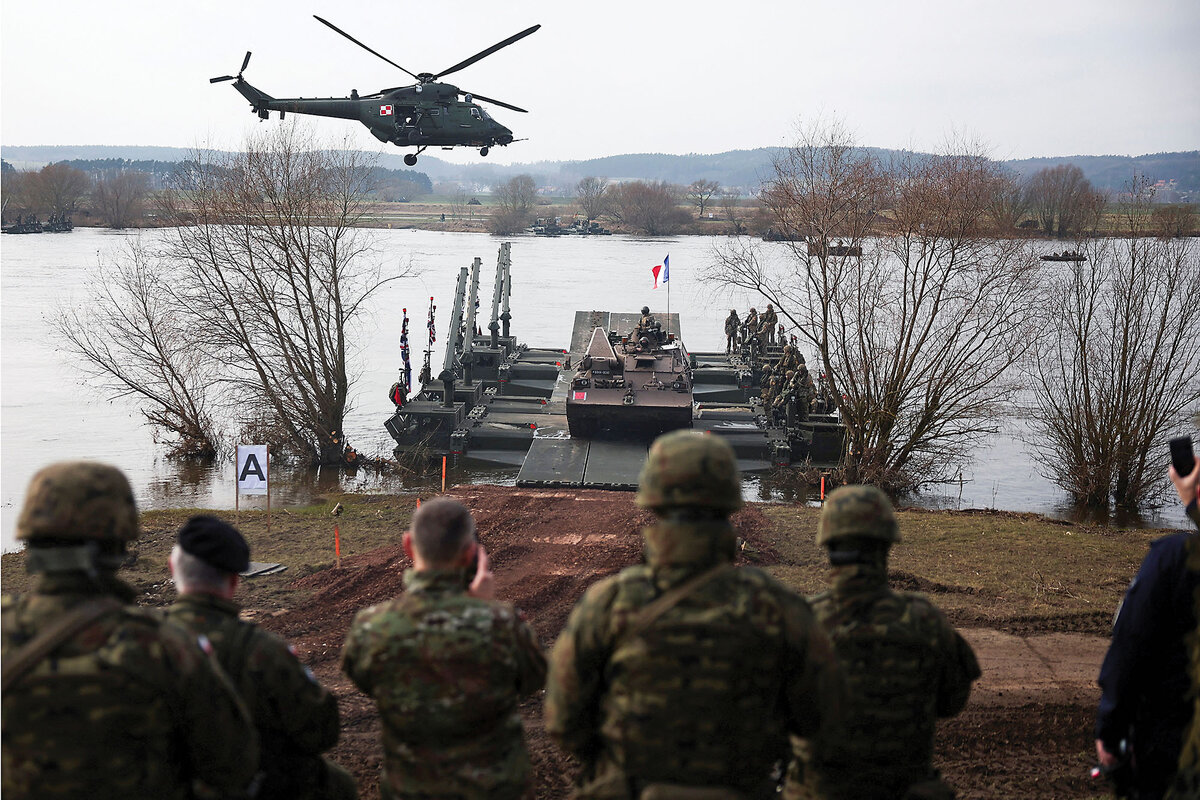
Indeed, for some critics, one needn’t be a peacenik, or Donald Trump, to argue that NATO has not only outlived its useful purpose, but is actually a threat to European peace and even U.S. security interests.
“I was wrong to think at one time that NATO is obsolete, because it’s actually worse than obsolete: It’s become a cause of global insecurity,” says Michael Desch, founding director of the University of Notre Dame’s International Security Center in Indiana. “The biggest war in Europe since World War II was caused by NATO expansion,” he says, referring to Russia’s war in Ukraine. “There’s just no way to get around that.”
NATO accomplished what it was created to do, he says, which was to defend Europe and the U.S. against the Soviet Union. But instead of celebrating a “mission accomplished” and turning out the lights, Dr. Desch says, the alliance disregarded warnings and “decided to go big by going east.”
It’s NATO’s expansion to Russia’s borders that has triggered “what Russia was making very clear all along this was going to lead to,” he says – namely, the “destabilization” of Europe. “So now we’re in a place where the newest members of NATO, the front-line states, are advocating jihad against Russia,” he adds. “NATO has created the problem which is now its purpose.”
Dr. Desch acknowledges with a chuckle that he is unlikely to be invited to speak at NATO’s Washington summit. But he also insists his views are not as far out of the mainstream as some might think.
“No doubt the foreign policy establishment would consider this kind of thinking ... a minority position,” he says. “But ... it resonates outside the elites in important ways,” he adds, referring for example to the head winds that additional military aid to Ukraine has faced in Congress.
“The world has changed a lot since 1989, especially with the rise of China to great-power status,” Dr. Desch says. “I have no problem with building alliances and bilateral relationships,” he adds, “but today that needs to be with Southeast Asia and partners in the Indo-Pacific.”
Even for NATO’s most ardent supporters, the worst thing it could do to mark its 75th anniversary would be to limit the summer’s summit to a celebratory bash featuring self-congratulatory speeches about a strengthened and united alliance.
Because NATO has work to do.
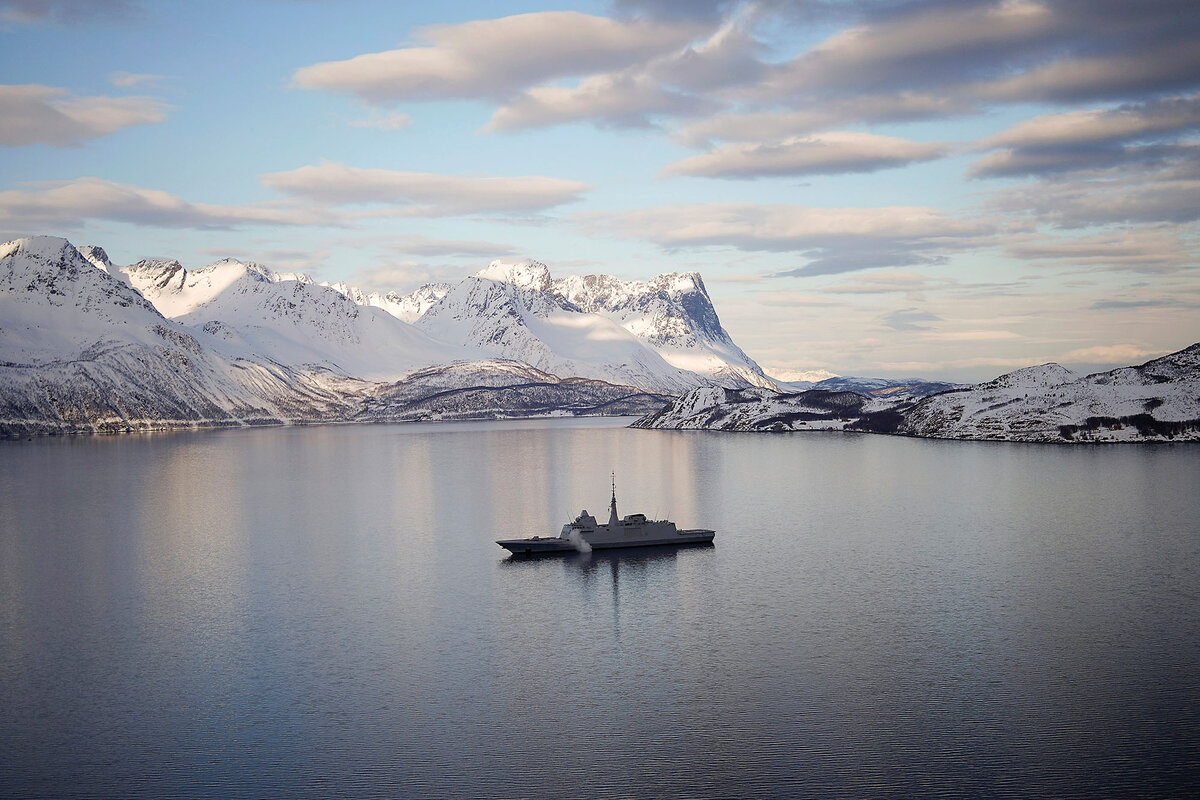
As Mr. Daalder, the former ambassador, says, you don’t have to be in the
“obsolete” camp to understand that the trans-Atlantic relationship has to change in significant ways as the U.S. and Europe confront today’s world.
Perhaps most critically, he says, Europe must in short order be able to take on more of its own security needs.
Calling himself the “embodiment of the trans-Atlantic alliance,” Mr. Daalder – now CEO of the Chicago Council on Global Affairs – notes that his mother survived the Holocaust, while his father survived a winter of starvation in occupied northern Holland. Both were beneficiaries of America’s entry into WWII.
Born in the Netherlands, Mr. Daalder left as a teenager to study in the U.S. – eventually writing his doctoral dissertation on NATO nuclear policy at the Massachusetts Institute of Technology in 1989.
Two decades later, he became the U.S. ambassador to NATO. “Imagine what it meant,” he says, for a boy born in Holland “to become the American president’s representative on everything about European and trans-Atlantic security.”
Still, he says the writing is on the wall portending a different trans-Atlantic relationship from the one he’s known.
“Joe Biden is very probably the last American president with European security on his brain,” he says. That changing of the guard was underscored by Senate Minority Leader Mitch McConnell’s announcement that he would step down from Senate leadership at the end of the year.
Senator McConnell said he had come to realize that his own foreign policy views – inspired by Ronald Reagan and his conception of America’s role as a global champion of freedom and universal values – are increasingly at odds with the Republican Party.
To be viewed as a success, the Washington summit will have to deliver “clarity” on Ukraine’s path to joining NATO, Mr. Daalder says. Moreover, if additional U.S. military assistance to Ukraine has not come through by then, it will cast a pall over the gathering, he adds.
But for the alliance’s long-term viability, even more critical will be the laying of a foundation for a more self-sufficient “European defense pillar” within NATO.
“Doing so will make it more likely the United States stays engaged in Europe,” he says, “rather than turning away.”
Editor’s note: This article has been updated to clarify Lt. Gen. Vesa Virtanen’s title. He is the chief of defense command for the Finnish Defence Forces.

Why drivers may soon pay $15 to use New York’s busiest streets
A global shift in urban planning – from private to public transit – has yet to take hold in the U.S. New York could be a test case for this shift and for public support for big-city congestion charges.

- Quick Read
- Deep Read ( 5 Min. )
-
By Hillary Chura Contributor
In June, New York is due to become the first U.S. city to charge a fee on cars and trucks as they enter its central business district in Manhattan, potentially raising billions of dollars to upgrade the city’s buses and subway lines.
New York’s congestion toll follows similar moves in cities like London, Milan, and Singapore. While it signals local ambitions to lessen traffic gridlock, reduce the carbon footprint of private vehicles, and nudge more people onto public transport, it also runs headlong into the global political debate about climate action’s cost and who pays the price.
In New York, government studies say congestion pricing will reduce traffic by 17% in Manhattan’s 9-square-mile congestion zone, lowering pollution. But implementation is not yet a go. Lawsuits could stall it. One concern is that drivers will skirt Manhattan’s congestion zone and switch to routes through the South Bronx.
If your goal is to reduce congestion, a charge is the right approach, says Nicholas Klein, a Cornell University urban planning professor. “Now, we pay a lot to drive in congested areas. We just pay with our time.”
Why drivers may soon pay $15 to use New York’s busiest streets

In June, New York is due to become the first U.S. city to charge a congestion toll on drivers entering its central business district in Manhattan, potentially raising billions of dollars to upgrade the city’s buses and subway that handle 4.6 millions trips a day.
Almost two decades in the making, New York’s congestion toll follows similar moves in cities like London, Milan, and Singapore. It signals local ambitions to lessen traffic gridlock, reduce the carbon footprint of private vehicles, and nudge more people onto public transport. It also runs headlong into the global political debate about climate action’s cost and who pays the price.
Advocates point to government studies that say congestion fees will reduce traffic by 17% in the roughly 9-square-mile congestion zone, thus lowering pollution. On weekdays, around 700,000 vehicles traverse the designated area from Central Park at 60th Street south to Battery Park.
“We’re more than ready for congestion pricing,” says Jon Orcutt, transportation policy director under former Mayor Michael Bloomberg, whose administration first proposed the plan in 2007. He says traffic and car ownership in the city now exceeds pre-COVID levels, and the crush of Ubers, Lyfts, and just-in-time deliveries compounds snarls.
The New York State Legislature approved congestion tolls in 2019, but implementation was delayed by the pandemic, regulatory red tape, and lawsuits. The Metropolitan Transportation Authority (MTA) board voted last week to launch the plan, which still faces legal challenges.
Officials estimate the new toll would raise $1 billion a year to help pay for transit infrastructure, including extending the Second Avenue subway line to Harlem, making subway stations more accessible and further modernizing the aging system.
Most passenger vehicles will pay $15 to enter the district. Trucks will pay more, and motorcycles less, with discounts from 9 p.m. to 5 a.m. Taxi and app-based ride customers will pay an extra $1.25 and $2.50, respectively. Hard-pressed cabbies fear that tips will shrink even further, coming atop a prior $2.50 congestion fee for trips south of 96th Street. Cars using Franklin D. Roosevelt Drive and the West Side Highway don’t have to pay. Residents who live inside the zone and drive out must pay the toll to return.
There are also exemptions for emergency and government vehicles, as well as for yellow school buses; advocates say reduced congestion would speed journey times for those vehicles.
Many in this city of skeptics question how well the MTA will spend the money, given its history of mismanagement, graft, and opacity.
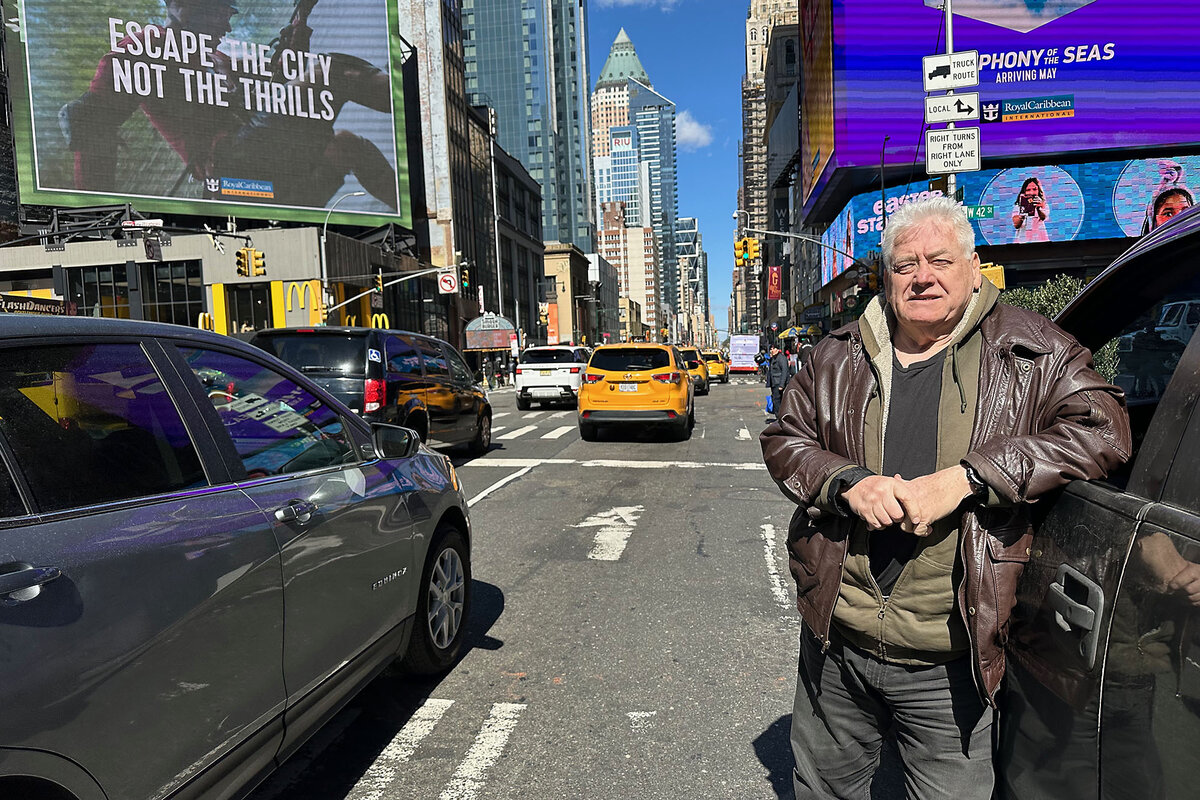
“They’ve never used their money responsibly before,” says Alex Roth, a building contractor who drives into the zone almost daily. ”There’s no reason to think they’re going to do it now.” A longtime Manhattan resident, he says the MTA has failed to deliver on previous promises for a cleaner and faster transit system.
Paying with our time
Supporters of the new toll say the MTA’s new leadership makes it better positioned to invest new revenues in the system.
Gersh Kuntzman, editor of Streetsblog, which favors a less car-reliant city, says public transit improvements are already apparent. “If people don’t see them, it’s because they’re in their cars,” he says.
If the goal is to reduce congestion, a charge is the right approach, says Cornell University urban planning professor Nicholas Klein. “Now, we pay a lot to drive in congested areas. We just pay with our time.”
New York City had the worst traffic in America last year. But while most residents agree that traffic congestion is a serious problem, a 2019 Quinnipiac University poll found that fewer than half supported tolls, and many doubted it would reduce traffic in the designated zone.
Former Gov. Andrew Cuomo, who signed the congestion toll legislation in 2019, wrote recently in the New York Post that the plan should be delayed. He called for more research, and said riders don’t feel safe taking the subway.

Implementation is not yet a go. Lawsuits, including ones from the borough of Staten Island and New Jersey, could stall it. One concern is that drivers will skirt Manhattan’s congestion zone and switch to routes through the South Bronx. This poor, primarily nonwhite area already struggles with ailments like asthma, which health experts link to pollution from the multiple highways and freeways that crisscross the borough. The MTA says it will spend millions of dollars to improve air quality near the Bronx highways.
A post-Moses mindset
The congestion plan is part of a shift in global mindset toward more pedestrian- and bike-friendly urban environments. It’s a 180-degree turn from how New York was remade after World War II under influential urban planner Robert Moses. He designed roads, bridges, and tunnels that funneled automobiles throughout the city’s five boroughs – all while pointedly ignoring public transportation. His projects often came at the expense of marginalized groups, particularly in the Bronx, where Mr. Moses sliced and diced poor neighborhoods to build highways.
Kevin Smith is a regular on these roads. His family owns a farm in Middletown, so half the year he drives a 24-foot truck into Manhattan to sell vegetables, strawberries, and peaches at an outdoor market. He says higher tolls are just a cost of doing business.
“Every change they have made in my lifetime has made an overall improvement to traffic flow and quality of life in Manhattan,” Mr. Smith says, citing the conversion of parts of streets like Broadway to pedestrian-only sectors.
Still, the idea that American drivers, long used to unfettered access to a continent-spanning road system, would accept paying a toll to enter downtown zones seems foreign, which is why cities are watching New York’s experiment with congestion pricing.
“If you’re used to driving and not paying a charge and somebody puts a charge on your drive, that can feel like a violation of your rights,” says Peter Norton, a historian and author of “Fighting Traffic: The Dawn of the Motor Age in the American City.” “Americans grow up driving.”

The Explainer
Here’s what you need to know about the April 8 solar eclipse
The total solar eclipse over North America next week offers a viewing opportunity that won’t be repeated until 2044. Eclipses not only are wonders, but also can play a role in helping us understand the cosmos.

- Quick Read
- Deep Read ( 4 Min. )
On April 8, for about four minutes, many Americans will have the rare chance to witness a total solar eclipse. The last time that happened in North America was 2017 – and the next time won’t be until 2044. The eclipse, which occurs when the moon moves in front of the sun, will pass through a more densely populated path than in 2017, letting more people watch the darkened skies from their own homes.
When the sun is completely covered in the path of totality, viewers can remove their glasses for a few minutes and look directly at the sky. During this time, the temperature will drop, and birds will go silent. Depending on their location, some viewers may be able to see some particularly bright stars, or a 360-degree sunset.
Eclipses are a unique time for scientists to gather data. It allows them to observe the sun’s lower atmosphere, which is only visible during a solar eclipse, and to study “space weather,” which can sometimes cause electrical blackouts on earth.
“Not everyone cares about this, not everyone’s gonna stop what they’re doing, but I believe the majority of the people will,” says Jean Stehle, a school librarian. “And I think it really speaks to the power of wonder and the natural world.”
Here’s what you need to know about the April 8 solar eclipse
On April 8, for about four minutes, many Americans will have the rare chance to witness a total solar eclipse. The last time that happened in North America was 2017 – and the next time won’t be until 2044. The eclipse, which occurs when the moon moves in front of the sun, will pass through a more densely populated path than in 2017, letting more people watch the darkened skies from their own homes. Eclipse watchers are also expected to travel to localities along the path.
How can I watch the eclipse?
The stage in the eclipse when the moon entirely covers the sun, called totality, will last about four minutes. The path of totality, which starts on Mexico’s Pacific coast, will cross into Texas, slant across the Midwest, and end in Maine. All in all, 15 states will be in that narrow pathway, including cities like Cleveland and Indianapolis. Totality occurs at different times in different locations. In Dallas, it will start at 1:40 p.m. local time. If you’re in Burlington, Vermont, it will be 3:26 p.m.
The partial eclipse, in which the moon covers only part of the sun, will last a little longer than an hour. In this zone, NASA warns that viewers will need to wear protective eclipse glasses if they want to look at the sun directly, or use a special filter to observe it via camera lens, binoculars, or a telescope. The American Astronomical Society has a list of which glasses and filters are safe to use.
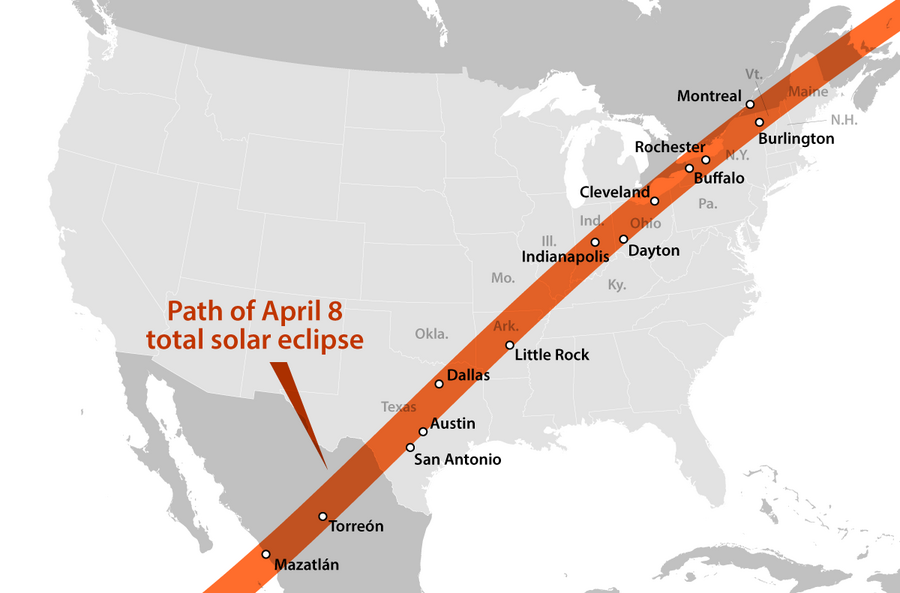
NASA
When the sun is completely covered in the path of totality, viewers can remove their glasses for a few minutes and look directly at the sky. During this time, the temperature will drop, and birds will go silent. Depending on their location, some viewers may be able to see some particularly bright stars, or a 360-degree sunset.
What if I don’t live in the totality line?
Unlike in 2017, the solar eclipse will be at least partially visible in 48 U.S. states. Even for communities far from totality, there will be interesting changes to watch. Astronomers say that leading up to the eclipse, some colors in natural light may appear saturated, and shadows may start to look fuzzy. As the moon glides across the sun, viewers can use a colander, a straw hat, or even a Ritz cracker to project shadow images of the sun’s crescent shape. They should also be on the lookout for unusual animal behaviors. Right before the eclipse, wildlife like birds and insects might act as if it were nighttime.
What are some scientific experiments to follow during the eclipse?
Eclipses are a unique time for scientists to gather data that’s usually unavailable. For example, an eclipse allows them to observe the sun’s lower atmosphere, which is only visible during a solar eclipse because the sun’s rays don’t block it out. An eclipse also helps them study “space weather,’’ which can sometimes cause electrical blackouts on earth.
Researchers will also be studying animal reactions at zoos. During the 2017 eclipse, some scientists noticed behaviors that ranged from galloping giraffes to sleeping gorillas. This time around, researchers will have teams stationed at zoos, and they’ve also called on citizen scientists, or hobbyists and everyday individuals with a love for science, to send in their wildlife observations from around the country.
How are communities engaging with the eclipse?
Museums and community centers across the country are hosting special events on April 8. The Smithsonian’s National Air and Space Museum will set up telescopes on the National Mall in Washington. The central library in Austin, Texas, will host a public viewing with activities for kids. And Aroostook County in Maine is designating some green spaces as “star parks” and equipping them with restrooms and parking.
“One of the reasons why this is a bigger deal than 2017 is that 36 million people naturally just live in that path of totality,” says John Jerit, CEO of American Paper Optics, a company that designs and makes eclipse glasses.
To make safe viewing more accessible, American Paper Optics has created almost 5 million eclipse glasses for donation to 10,000 U.S. libraries, using funding from the Gordon and Betty Moore Foundation and Space Science Institute.
As libraries hand out the free glasses, many of them are also educating recipients about the eclipse. Jean Stehle, a librarian at Newton Middle School in Massachusetts, recently helped students act out the role of sun, moon, and Earth in an eclipse simulation. The students asked questions about how their pets would react, and excitedly pointed out their location on a map of the eclipse’s path.
“Not everyone cares about this, not everyone’s gonna stop what they’re doing, but I believe the majority of the people will,” says Ms. Stehle. “And I think it really speaks to the power of wonder and the natural world.”
Editor's note: This story has been updated to clarify the funding source for the eclipse glasses donated to U.S. libraries.

NASA

Books
Five new mysteries plumb the past for clues to the present
Mysteries provide a break from everyday realities. We’ve found five novels that ratchet up the escapism as well as the fun of figuring out the culprit.

- Quick Read
- Deep Read ( 6 Min. )
One of my rules as a mystery reader is: If a character is going to mutter darkly for chapters on end about the Big Secret in their past, it needs to pay off.
As far as I’m concerned, the form reached its apotheosis in Stella Gibbons’ classic satire “Cold Comfort Farm,” with the immortal cry, “I saw something nasty in the woodshed!”
I am pleased to report that the authors of all five of our featured mysteries understand the stakes. From Tana French’s “The Hunter” to C.L. Miller’s “The Antique Hunter’s Guide to Murder,” the action is focused on protagonists trying to extricate themselves from a sticky past.
“Most of us have been broken in one way or another,” says a character from “The Antique Hunter’s Guide to Murder.” He continues, “We don’t need to hide the scars, for they make us who we are.”
Five new mysteries plumb the past for clues to the present
The past, and how its tentacles can reach into the future, lies at the heart of many a mystery. In five new works, past secrets propel present crimes, threatening the new lives that protagonists are fighting hard to create.
One of my rules as a reader: If a character is going to mutter darkly for chapters on end about the Big Secret in their past, it needs to pay off. As far as I’m concerned, the form reached its apotheosis in Stella Gibbons’ classic satire “Cold Comfort Farm,” with the immortal cry, “I saw something nasty in the woodshed!” I am pleased to report that the writers here all understand the stakes.
Deceit in an Irish village
Tana French uses the temperatures of a scorching heat wave to stretch the tension – and mystery genre conventions – like taffy in “The Hunter,” her follow-up to “The Searcher.” Both novels are inextricably woven together, and it is impossible to review the second without referring to the events in the first. So be warned: Spoilers ahead!
“The Hunter” returns to the watchful and ethically murky Irish village of Ardnakelty, where retired Chicago cop Cal Hooper has crafted a new family for himself with veterinarian Lena and Trey, the teen he teaches carpentry and ethics. Cal handles his neighbors warily – as one should with dangerous materials – and confines his impulses to fix things to broken objects. Then Trey’s missing father brings home an English millionaire and tries to sell the villagers on what he claims is a promising scam: “There’s gold in them thar hills.” Trey, meanwhile, sees a chance for revenge against the men who buried her beloved brother in a peat bog. “The Hunter” is an unrepentedly slow burn. As the folksy charm of multiple characters wears thin, the novel exposes layers of malevolence and deceit. Who is going to die isn’t clear until halfway through, but the real question that will keep readers gripped is, can Cal and Lena save Trey from the course she’s embarked upon? The full emotional impact of her latest novel comes from readers having already learned to care about the characters in the first. And why deny yourself the pleasure of French at her best?
Secrets, some classified
There may be people who can resist sisters whose motto comes from Don Marquis’ “Archy and Mehitabel,” but I am not one of them. “Toujours gai, Archie!” Penny and Josephine Williamson advise their beloved nephew in “The Excitements” by CJ Wray. Learning to remain stalwartly happy amid a downpour of sorrows is an acquired skill that they strive to teach Archie, along with fly-fishing, camping, and the vanished martial art of Defendu.
Now in their 90s, the World War II veterans are headed to France, with Archie in tow, to receive the Legion of Honor medal. “The Excitements” is not actually a mystery, but I’m cheating and including it here because it’s too delightful for readers to miss. And there is plenty of crime and at least one murder. Both Josephine and Penny are sitting on secrets – some covered by Britain’s Official Secrets Act, and some not. The ending requires much suspension of disbelief, but by then readers will be happy to believe the Williamson sisters capable of anything.
Preordained murder
As readers of British cozy mysteries know, a village fete is never a safe place to let down your guard. In “How To Solve Your Own Murder” by Kristen Perrin, a fortuneteller predicts teenager Frances Adams’ murder: “Your future contains dry bones,” the inauspicious reading begins. Frances spends the rest of her life trying to forestall that event – only to be found dead in her study after summoning her grandniece Annie to hear her will. Frances kept decades of research in the form of files and journals, and Annie, a would-be mystery writer, feels that she has the tools to put the clues together. The plot has a nice sense of propulsion, the mystery definitely captures interest, and Perrin is a smooth writer. But the past and the present never fully come together – the generous-hearted teen morphing into a paranoid lady-of-the-manor occurs mostly off the page. And Annie, a friendly presence but hapless sleuth, commits one of the genre’s chief blunders: confronting a potential murderer by herself. Unless your great-aunts have trained you in the World War II art of Defendu, please leave this to the professionals.

Mysterious portrait
An inheritance sends Jo Jones to the British countryside in “The Framed Women of Ardemore House” by Brandy Schillace. As an editor who is autistic and hyperlexic, she needs a reset and a job after her ex cheated on her, then cheated her. Nursing her dying mother, Jo is too tired to fight back. Then she inherits the family estate in North Yorkshire – a moldering pile of back taxes, rotting books, and a mysterious portrait of a lady, which promptly vanishes. Next, the sleazy caretaker is found dead, and outsider Jo finds herself considered a convenient suspect by the local constabulary. As Jo puts it, reading is her superpower, so she starts researching everything she can about Ardemore House and the missing painting, convinced the past will help clear her of suspicion.
Jo’s love of words and Gothic literature and her card catalog of a brain make her a sharp-witted protagonist. “Mostly it’s just very crowded up here. And sometimes lonely,” she explains about her inability to forget that makes it possible for her to see connections others miss. “Plus, even though I never forget things, others do. Often, I’m left living in a memory that has vanished for other people.” Schillace clearly loves the written word as much as her heroine, and “The Framed Women of Ardemore House” offers both gorgeous bits of Yorkshire lexicography and a thoughtful mystery that does justice to generations of women who see life differently.
Making a killing in antiques
In C.L. Miller’s “The Antique Hunter’s Guide to Murder,” Freya Lockwood’s London home is being sold out from under her by her wretched ex-husband. Then she gets a message from her estranged mentor asking for her help – only to find he’s died in a fall.
Arthur Crockleford was ostensibly the owner of an antiques shop, but it was a front for his real business: a detective agency for the antiques world. Arthur had helped Freya’s Aunt Carole raise her after the child’s parents died in a fire.
Arthur showed the heartbroken girl a porcelain plate repaired with kintsugi, the Japanese art of fixing broken things with gold. “This plate is different than before, but it’s still precious,” Arthur tells Freya. “Most of us have been broken in one way or another. We don’t need to hide the scars, for they make us who we are.”
Freya hadn’t seen Arthur since events in Cairo sundered their relationship irreparably, but Arthur’s death has her resurrecting skills she hasn’t used in two decades. This includes an unerring eye for the old and precious and ... the martial art of Krav Maga. (That last feels more than a touch tacked on, as do references to Freya having been a real-life Lara Croft back in the day.) Aunt Carole’s glamour, however, is utterly unforced. Miller comes by her knowledge of antiques through her mother, the late Judith Miller, a star of the BBC’s “Antiques Roadshow.”
Arthur’s aphorisms, which headline each chapter, vary in quality, but the best come from Miller’s mom, such as “To find the best deal at an antiques fair always turn left, because everyone else always turns right.”
Other headline stories we’re watching
(Get live updates throughout the day.)The Monitor's View
Seeds of honest governance in Africa
- Quick Read
- Deep Read ( 3 Min. )
-
By the Monitor's Editorial Board
Three decades ago, after South Africa made its transition to majority rule, African leaders began to set down principles for governance on the continent. Those agreements planted the seeds for what most Africans now see as essential: that democracy can lead to peace and opportunity.
In 2024, when more than a dozen African countries are slated to hold elections, those expectations are resulting in new benchmarks of progress.
Last month, for example, Senegal’s highest court prevented an illegal attempt by the outgoing president to stay in power or imprison opposition leaders. In Ghana, government leaders and civil society groups are working together to safeguard a December election from digital disinformation.
South Africa today offers another encouraging sign. When its voters cast ballots next month, the African National Congress may finally lose the majority it has held since 1994 when apartheid ended. Public support for the ruling party has dipped below 40% for the first time.
Seeds of honest governance in Africa

Three decades ago, after South Africa made its transition to majority rule, African leaders began to set down principles for governance on the continent. Those agreements planted the seeds for what most Africans now see as essential: that democracy can lead to peace and opportunity.
In 2024, when more than a dozen African countries are slated to hold elections, those expectations are resulting in new benchmarks of progress.
Last month, for example, Senegal’s highest court prevented an illegal attempt by the outgoing president to stay in power or imprison opposition leaders. In Ghana, government leaders and civil society groups are working together to safeguard a December election from digital disinformation.
South Africa today offers another encouraging sign. When its voters cast ballots next month, the African National Congress may finally lose the majority it has held since 1994 when apartheid ended. Public support for the ruling party has dipped below 40% for the first time, according to a Brenthurst Foundation poll. Voters are weary of official corruption. One of the latest scandals includes the Parliament speaker, an ANC stalwart.
Such progress has another explanation. Voters can more easily see what an alternative looks like.
In many African countries, entrenched ruling parties have hobbled their political rivals through foul play. In South Africa, for as long as the ANC has governed nationally, another party called the Democratic Alliance (DA) has held the majority in Cape Town and the Western Cape province. Its governing record – measured by effective municipal councils, delivery of services, and business growth – underscores how people benefit when opposition parties mature and thrive.
“The strength, effectiveness, and quality of a democracy largely depend on the opposition parties’ efficiency, relevance, and ability to credibly show they are ready to govern,” noted William Gumede, a professor at the University of the Witwatersrand in Johannesburg.
Functioning and loyal opposition parties, he wrote for Democracy Works Foundation, depend on and reinforce the rule of law. They enable consensus-building debate and hold ruling parties accountable. They help preserve judicial independence and encourage citizen participation.
In those African countries where opposition parties are gathering strength, Dr. Gumede observed, they function “within the prescripts of the country Constitutions, laws, and parliamentary rules – and with integrity.”
Sensing the ANC’s vulnerability, the DA and a handful of smaller parties have formed a united front in case they collectively win enough votes to form a coalition government after next month’s election. But one measure of political integrity is civility with one’s opponents. DA leader John Steenhuisen has not ruled out uniting with the ANC if it can govern more honestly and by working with the opposition. “The biggest beneficiaries of good, clean, accountable government are poor, marginalised South Africans,” he told Reuters.
Public pressure for ruling parties to reform is rising in Africa. One longtime ANC official, for example, recently rebuked the party in a rare moment of contrition. “When we took over government in 1994, we had the moral high ground,” Mavuso Msimang wrote. “Yet, three decades later, the ANC’s own track record of corruption is a cause for great shame.” Africa’s ruling parties used to base their legitimacy and longevity on what they did long ago to liberate their countries for majority rule. As that legacy has faded, more Africans are poised to shape a new era that relies on rule by merit, rule by law – and rule with a touch of humility.

A Christian Science Perspective
Each weekday, the Monitor includes one clearly labeled religious article offering spiritual insight on contemporary issues, including the news. The publication – in its various forms – is produced for anyone who cares about the progress of the human endeavor around the world and seeks news reported with compassion, intelligence, and an essentially constructive lens. For many, that caring has religious roots. For many, it does not. The Monitor has always embraced both audiences. The Monitor is owned by a church – The First Church of Christ, Scientist, in Boston – whose founder was concerned with both the state of the world and the quality of available news.
The love that lifts us out of self-hatred
- Quick Read
- Read or Listen ( 3 Min. )
-
By Rachel Schutz
A spiritual view of our identity shows us we’re more lovable than we may have thought we were.
The love that lifts us out of self-hatred
“Love yourself” is a popular admonition. As I’ve thought about what it means to love oneself, I’ve gained a spiritual perspective by exploring this question about identity: What exactly am I loving as myself?
The view of ourselves as basically a physical body with a human personality arises from the belief that we are made both spiritual and material. This false self is susceptible to the extremes of either a crippling low self-esteem or an inflated ego. Christian Science explains that this false concept of man must, and can, be rejected. The reality is that we are each created entirely spiritual.
Jesus understood his spiritual identity as the Son of God and never lost sight of his true spiritual worth and purpose. The Science of Christianity is based on his example, and shows us how to see the spiritual value of ourselves and others as he did. Acknowledging and claiming our spiritual identity, and loving it, gives us confidence, joy, and humility. It enables us to progress in our understanding of God as our spiritual source, to strive for a full expression of our potential, and to resist entertaining dark thoughts of self-condemnation, self-doubt, and selfishness.
When I was a first-year college student, I struggled with an acute sense of self-hatred. I was not generally depressed, but I would have periods of such dark thoughts about myself that sometimes I couldn’t even leave the house in the morning. I was also clinging to some destructive relationships, and my living situation sometimes felt unsafe.
I had been occasionally attending Sunday School at the Church of Christ, Scientist, near my school, and I became more committed to it after a friend commented that I was always happier after church. One Sunday morning, my Sunday School teacher said to me, “You have to love yourself.” I don’t remember the context for that conversation, but that one statement stuck with me and shook me awake. I considered all I had learned in Sunday School about my identity as a child of God, created perfect in His, Her image and likeness.
The first chapter of Genesis in the Bible explains that God made man (all of us) in the image and likeness of Himself. Christian Science brings out the fact that because we are made in the likeness of God, who is Love and absolute good, everything that’s true about us is spiritual, good, and lovable. Our real identity is defined by the spiritual qualities that are found in God, whom we reflect – qualities such as love, intelligence, strength, and goodness.
I began to see the complete mistake of entertaining any thoughts of self-hatred, since I was truly a beloved daughter of my Father-Mother God. Because our true selfhood is created in the image of God, we are worthy of love.
The next time thoughts of self-condemnation tempted me, I was able to reject them right away and stick with my confidence in being divinely loved and worthy of love. I now had a clear spiritual understanding of my identity as a perfect reflection of God, and no depressing thoughts could shake this knowledge I had gained.
As a result, I experienced a more settled peace of mind, and my attendance and the quality of my work in the college courses I was taking improved, too. In the following months, I was also able to let go of those destructive relationships and find a safer living situation.
Mary Baker Eddy, the discoverer of Christian Science, writes, “Self-renunciation of all that constitutes a so-called material man, and the acknowledgment and achievement of his spiritual identity as the child of God, is Science that opens the very flood-gates of heaven; whence good flows into every avenue of being, cleansing mortals of all uncleanness, destroying all suffering, and demonstrating the true image and likeness” (“Miscellaneous Writings 1883-1896,” p. 185).
Unlimited divine Love is the source of our being. This love is totally devoid of selfishness, self-pity, self-condemnation, and self-will, and frees us to express the boundless joy and liberty of our divine inheritance as God’s children. All people are worthy of love, and also capable of love, no matter who they are. We are forever protected from suffering hateful or unloving thoughts about ourselves or anyone through this true sense of selfhood.
Adapted from an article published in the Feb. 3, 2020, issue of the Christian Science Sentinel.

Viewfinder
Coal to the goal

A look ahead
Thanks for reading the Daily. Watch for a report tomorrow from Dominique Soguel. Portugal stands out among European nations for its openness to migrants. But the growth of Muslim and South Asian communities there, combined with the rise of a far-right party, is straining that relationship.



